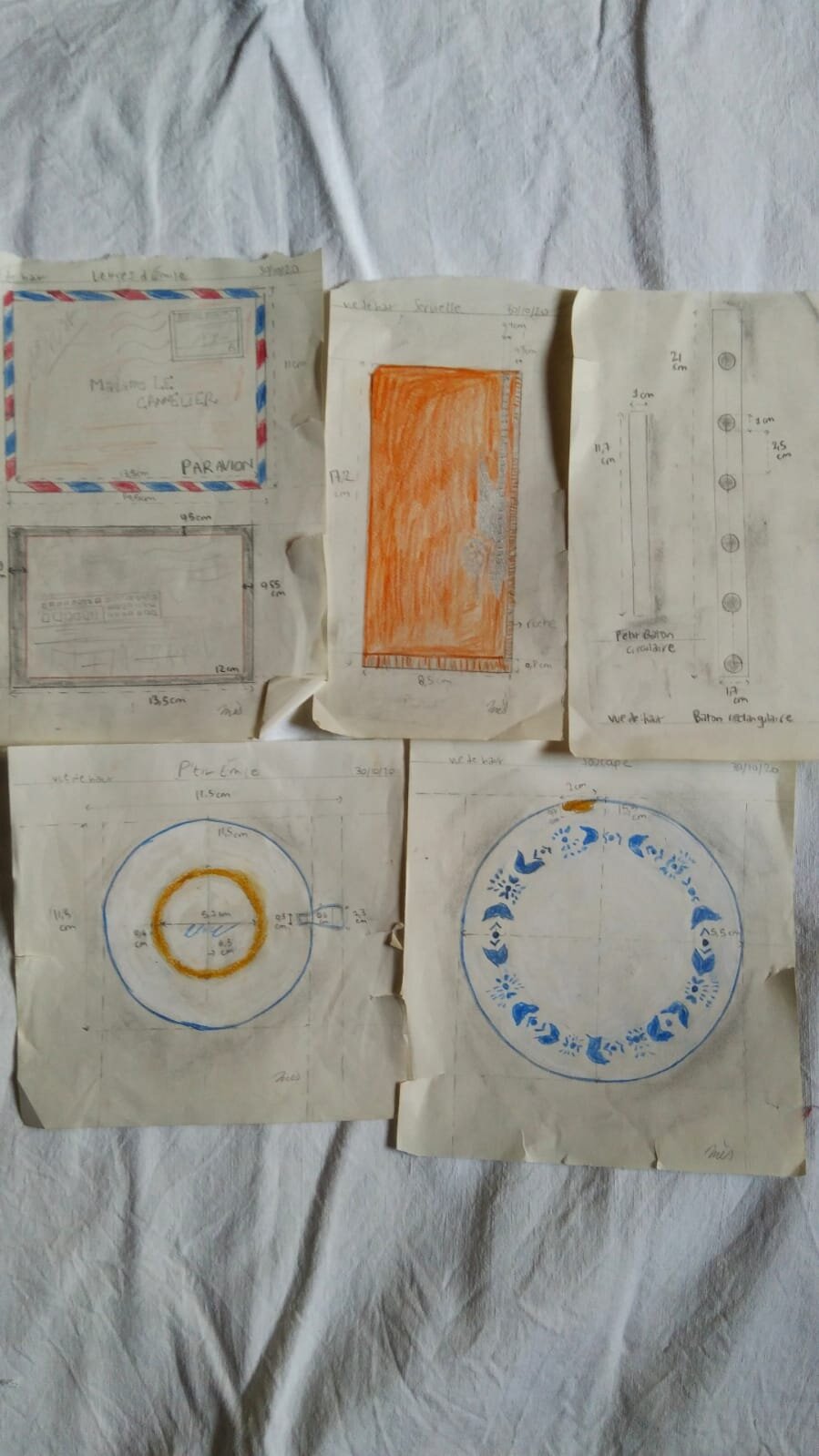Emile Le Bol, La Mallette, 2020
briefcase with found objects (small bowls, cloth napkin, saucers, old letters and postcards, a wooden-handled knife, a pen, wooden dishrack dowels)
This is part 3 of the 3 part found-object project realized in my Design Studio course. Read more about part 1 and part 2. In part 3, we increased the scale we had been working with and began to conceptualize an actual space for our chosen object. We studied the Fluxus art movement, a multimedia politically-geared avant garde movement that created “flux kits”. “Each year, George Maciunas, leader of the [Fluxus] group, and other members would compose a new flux-box, juxtaposing objects that acted on levels simultaneously physical, symbolic, and historical. Available through mail order, the kits were intended to be affordable, accessible, and communicative.” We essentially had to create our own flux kits.
I found an old briefcase in the attic of our family home that had belonged to my grandfather. It was dusty and filled with old letters and vintage postcards, but it would be the perfect container to house Emile - or in this case, several miniature Emiles. I then chose a dish rack as the base on which my objects would rest, and around which they would be organized. Indeed, the dish rack not only established the connection between Emile and his place of origin (the kitchen), but also served to create sections delineating the interior of the briefcase. I went through several iterations in terms of which objects to include in the kit, and how to position them. I finally ended up using three small bowls (mini Emiles), a stack of letters and postcards that were originally in the briefcase, two saucers, a knife, and a napkin which I had used for my assemblage in part 2. I also included a pen and instructions on how to use the kit to create your own objet-scultpure, as this is an interactive piece.
The main concept I wanted to explore and represent through this kit is the duality that defines Emile: on one side he is a purely functional object, and on the other he is a person with emotions and memories.
The box itself acts as vehicle for the memories Emile has accrued to be passed on to whomever uses it. The box becomes interactive and conducive to new memories. What makes a person a person? It is the ability to emote and feel, and by extent, to record and remember those experiences. Here, these experiences are recorded.
I demonstrate that the sum is greater than the parts. Emile is so much more than just a bowl. Reduced down to just his individual components, Emile returns to the realm of the object, and reassumes his purpose as a functional piece of dishware. Where do dishes typically live? The dish rack seemed like the most obvious answer apart from a cupboard. I was interested in the material and structural properties of the dish rack as something that was both open and enclosed. Also, despite appearances the dish rack can be a powerful tool to organize and present objects in such a way as to simultaneously emphasize their object-ness and offer possibility for a different life. The dish rack also signals Emile’s origins. The placement of Emile in a dish rack and the inclusion of objects such as the cutlery and saucer serve to remind the user of where Emile came from.
Through the simple acts of assembly and disassembly the user can bring Emile to life and accordingly, reduce him to his material parts, in essence objectifyfing him. The box is a testament to the potential of what Emile can become while also being a poignant reminder of what, in the end, he will only ever be. I wanted to translate this idea of the sum being greatar than the parts in the drawings by creating a collage of sorts, showing each individual drawing together as one, almost like a coordinated multi view architectural drawing.
Container orthographic & axonometric drawings - AutoCAD











